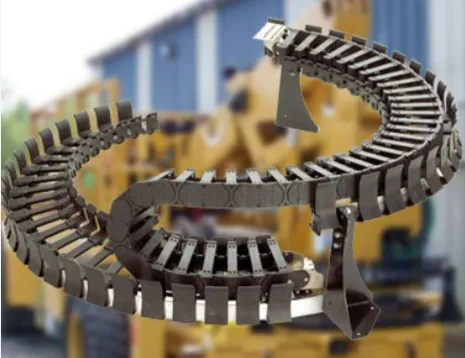corrugated conduit sizes
Understanding Corrugated Conduit Sizes A Comprehensive Guide
Corrugated conduits are essential components in electrical and construction projects, providing protection for wiring and ensuring safety in various environments. These flexible tubes are designed with a series of ridges and grooves that allow for easy installation and manipulation, making them popular in a wide range of applications. To effectively utilize corrugated conduits, it's crucial to understand the different sizes available and how they relate to specific project requirements.
What is Corrugated Conduit?
Corrugated conduit is typically made of materials such as plastic or metal and features an exterior that has a distinct corrugated pattern. This design not only enhances flexibility but also contributes to the durability of the conduit, providing resistance to impacts, moisture, and various environmental factors. Common uses for corrugated conduits include protecting electrical wiring in both residential and commercial buildings, automotive applications, and underground installations.
Standard Sizes of Corrugated Conduits
Corrugated conduits come in several standard sizes, denoted in diameters. The sizes can vary by manufacturer, but the most common dimensions include
- 3/4 inch - 1 inch - 1 1/4 inch - 1 1/2 inch - 2 inch - 3 inch - 4 inch
These measurements typically refer to the inner diameter of the conduit, which affects the number of wires that can be accommodated within. When selecting a conduit size, it's essential to consider the gauge and number of wires being routed, as well as the electrical codes applicable in your area.
Factors to Consider When Choosing Size
1. Wire Capacity The primary consideration in conduit sizing is the capacity required for the wires running through the conduit. NEC (National Electrical Code) guidelines outline the fill limits for conduits based on the size and number of conductors. Overfilling conduits can lead to overheating and increase the risk of electrical fires.
corrugated conduit sizes

2. Type of Installation The installation environment plays a significant role in determining conduit size. For example, outdoor or underground installations may require larger conduits to accommodate potential expansions of wire bundles due to environmental conditions.
3. Flexibility While larger conduits can house more wires, they are less flexible and may be more challenging to maneuver in tight spaces. Conversely, smaller conduits offer greater flexibility, making them ideal for intricate installations.
4. Future Expansion It's wise to consider future needs when selecting conduit size. Projects that may expand or incorporate additional wiring down the line should take this into account. A slightly larger conduit can accommodate future wiring without the need for replacement.
5. Local Codes and Regulations Always consult local building and electrical codes to ensure compliance. These codes may dictate specific requirements regarding conduit sizing, installation methods, and material types.
Advantages of Using Corrugated Conduit
One of the main advantages of corrugated conduit is its flexibility, which allows it to be bent and shaped to fit complex installation environments. This flexibility, combined with its protective qualities, makes corrugated conduit exceptionally effective at safeguarding wiring from physical damage, moisture, and various chemicals.
Additionally, corrugated conduits can be easier to install compared to rigid conduits, particularly in situations where multiple bends or turns are necessary. Their lightweight design also reduces labor costs and physical strain during installation.
Conclusion
Choosing the right size of corrugated conduit is crucial for the safety and effectiveness of any electrical installation. By carefully considering the factors outlined above, including wire capacity, installation type, and future expansion, you can select a conduit size that meets your current needs while accommodating potential upgrades.
Investing time in understanding corrugated conduits and their specifications can lead to a more efficient and compliant installation, ensuring that your electrical systems operate safely and effectively for years to come. Whether working on new construction or renovations, make informed choices to enhance the durability and reliability of your wiring infrastructure.








